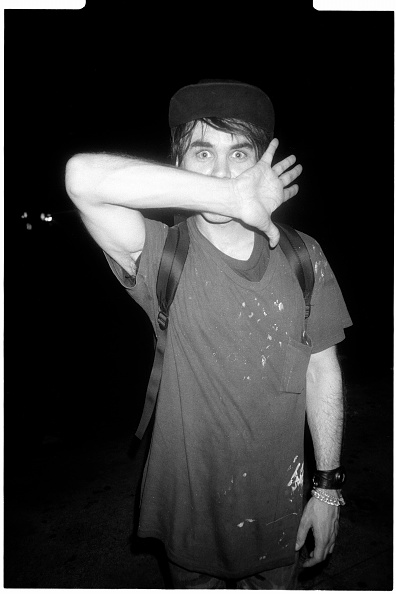Was there a more precocious American fashion designer than Stephen Sprouse? He once told Interview magazine that he’d learned to sketch from reading Vogue at age 8, and began designing clothes a year later. At 12, his father took him to New York to meet Bill Blass, whom he sketched for at 14 before attending Rhode Island School of Design for a semester, at age 18. He left shortly thereafter to work for Halston.
Sprouse’s legacy is that his work bridged an unspoken gulf between New York’s uptown sophistication and downtown punk and pop scene—a mix of tastes and styles that we take for granted today. In May 1984, Sprouse stormed the Ritz Club in the Lower East Side, bringing fashion editors below 14th Street where he staged one of his most famous shows.
His “punk couture” shows were laden with Day-Glo, Velcro, and space-age fabrics, while always demonstrating an uncompromising eye for craft and detail.
The industry raved about Sprouse’s high-octane, bright, and energetic collections. Bergdorf Goodman and Henri Bendel picked up his first collection in 1983. Sprouse received the CFDA award for Best New Designer in 1984.
Sprouse’s approach to clothes was exacting, raw, and widely experimental. All the same, he never achieved commercial success, experiencing bouts of bankruptcy, despite the cult status buyers and press anointed on him for his role as a cultural visionary and fashion darling.
Shortly after receiving the CFDA award, Sprouse’s business folded. After another investment and some success, he struggled to keep his label going. He persisted through the ‘80s and ‘90s, collaborating with icons like Andy Warhol and Keith Haring—to say nothing of the legendary designs in neon graffiti that he did with Marc Jacobs for Louis Vuitton in 2000.
Sprouse’s life ended suddenly, at age 50, after a year-long struggle with lung cancer that he kept private.
Pictured: Stephen Sprouse after a party at the Sunny Baks studio, July 1987.



